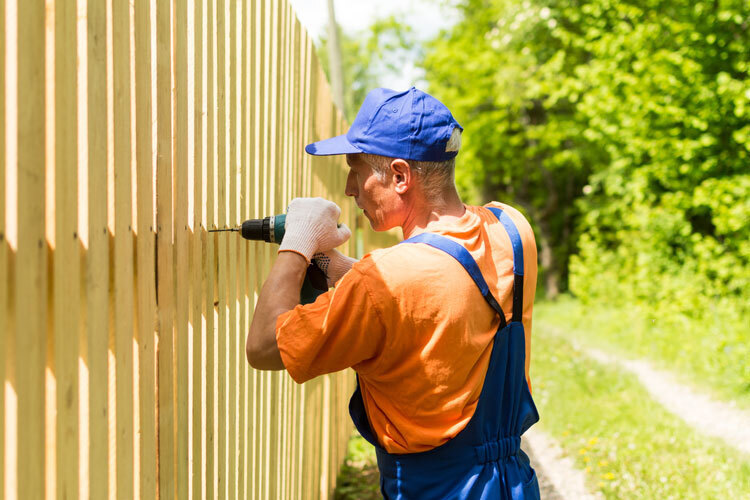10 Things to Consider When Building a New Fence
How Planning and Preparation Can Pay Off
Thinking about building a new fence? Whether you want to boost your home’s curb appeal, add privacy, or keep pets safe, a fence is a significant investment that can transform your outdoor space. But before you start digging post holes, there are several important factors to consider. Here’s a handy guide to the top 10 things you need to think about before building your new fence.
1. Purpose: Why Do You Need a Fence?
Before you pick up any tools, be clear about why you want a fence. Are you looking for privacy from neighbors, security for your property, a safe space for kids or pets, or simply to enhance your home’s appearance? Your fence’s purpose will influence its height, style, and materials.
- Privacy: Tall, solid fences such as wood panels or vinyl are best.
- Security: Consider sturdy materials and lockable gates.
- Aesthetics: Decorative metal or picket fences can add charm.
- Pet/Kid Safety: Ensure the fence is tall enough and has no gaps.
2. Local Regulations and HOA Rules
Many neighborhoods and municipalities have rules about fencing. These can cover everything from height and style to the materials you’re allowed to use. If you live in a community with a homeowners association (HOA), check their guidelines as well. Failing to follow local codes can mean fines or having to remove your fence entirely.
- Permits: Some areas require a permit before you build.
- Setbacks: Rules may dictate how close your fence can be to property lines, sidewalks, or roads.
- Historic Districts: Special rules may apply.
3. Property Lines: Know Your Boundaries
Nothing sours neighborly relations faster than a fence built on the wrong side of the property line. Always check your property survey or hire a professional to mark the boundaries. When in doubt, talk with your neighbors before building.
- Tip: Leave a little space inside your property line for maintenance access.
4. Choosing the Right Materials
Fences come in a variety of materials, each with its pros and cons. Consider your climate, budget, and the look you want to achieve.
|
Material |
Pros |
Cons |
|
Wood |
Classic look, customizable |
Needs regular maintenance |
|
Vinyl |
Low maintenance, durable |
Can be pricier upfront |
|
Metal |
Strong, secure, decorative options |
May rust (unless aluminum) |
|
Composite |
Eco-friendly, low maintenance |
Higher initial cost |
|
Chain Link |
Affordable, functional |
Less privacy, utilitarian style |
5. Style and Design
Your fence should complement your home and landscape. Think about color, height, and decorative elements like lattice tops or post caps. Look at fences in your neighborhood for inspiration and to ensure your choice fits in with the surroundings.
- Tip: Some styles offer more privacy, while others are more open and decorative.
6. Maintenance Needs
Different fences require different levels of care. Wood fences need staining or painting every few years, while vinyl and composite options are mostly maintenance-free. Metal fences may need occasional rust protection. Think about how much time and effort you’re willing to invest in upkeep.
- Low Maintenance: Vinyl, composite, aluminum
- Higher Maintenance: Wood, wrought iron
7. Budgeting for Your Fence
Fencing costs can vary widely depending on materials, height, length, and installation complexity. Remember to factor in gates, hardware, and any landscaping changes needed. Get multiple quotes if you’re hiring a professional—and always budget for a little extra in case of surprises.
- DIY vs. Professional: Doing it yourself can save money, but a pro ensures quality and saves time.
8. Installation: DIY or Hire a Pro?
Building a fence can be a satisfying DIY project, but it’s also hard work that requires the right tools and skills. Consider your experience level, the size of the project, and whether you have friends to help. For complex projects or tricky terrain, hiring a professional may be the best choice.
- DIY: Good for small, simple fences.
- Professional: Best for large, complex, or security fences.
9. Gates and Access Points
Remember gates! You’ll need at least one, and possibly more, depending on your yard’s layout. Make sure gates are wide enough for lawnmowers, wheelbarrows, or even vehicles, if necessary. Plan their location for convenience and security.
- Tip: Self-closing, lockable gates add safety for kids and pets.
10. Neighbors and Goodwill
A fence can impact your neighbors, so it’s courteous (and sometimes required) to discuss your plans with them first. They may even be willing to share costs for a boundary fence. Keeping communication open can prevent disputes and ensure everyone’s happy with the result.
- Tip: The “good side” of the fence (the more finished-looking side) typically faces your neighbor or the street.
Building a new fence is more than just putting up some boards or panels—it’s about making thoughtful choices that will serve you well for years to come. By considering these 10 factors, you’ll end up with a fence that looks great, functions well, and keeps the peace with your neighbors.
Since 1975, AVO Fence & Supply has provided high-quality fencing materials and supplies to homeowners and professional installers. With locations in Stoughton, Hingham, and Plymouth, MA, we are the leading supplier of cedar in the New England area. Give us a call today at (781) 341-2963.


